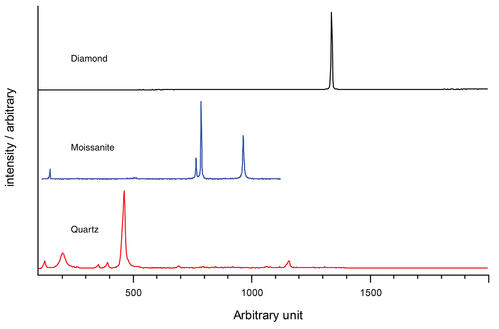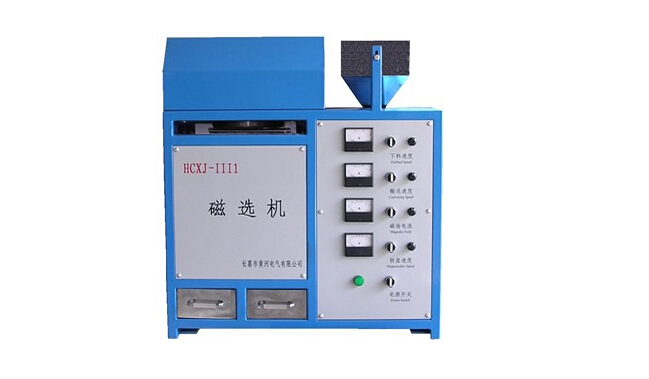In order to meet the use of diamond sintering tools, diamond powder need to be performance tested. The main Material Properties of Diamond are wear resistance, thermal stability, impact strength and microstructure.

Diamond Shaped Detection System
people usually analyze the shape of Diamond Powder through naked eye observation under a microscope. Such an analysis has a lot of subjective factors, which will cause analysis deviation. The advanced shape detection system can quantitatively evaluate the quality of diamond crystal shapes.

Basic method: By scanning the diamond sample made of diamond particles perspective digital image plane (2-d) topography measurement in the scanner, then through the computer software to detect and analyze the image, to accurately measure the diamond morphology parameters and quantify them. Such as,shape,size, color, light transmittance, purity and morphology parameters, roughness, etc.
Diamond Shaped Detection System can include the following indicators: Fe (ellipticity), Fc (roundness), R%(roughness), PSD (particle size distribution), RGB (chromaticity), T (transparency), C (purity) and PPC (grain /ct). Under the use of the diamond shaped detection analysis system, the above indicators and morphology characteristics of the diamond have a scientific and detailed understanding, in order to use different types of diamond in the appropriate diamond tools, to achieve more targeted and efficient use of diamond.
Diamond Size Distribution Detection
The particle size distribution of diamond was determined by Laser Diffraction Analysis, the diffraction effect of light is produced when the laser is irradiated on the micro powder particles. The size difference of the particles brings the change of the laser diffraction angle, and the projection on the detector shows the change of the size of the diffraction ring. Laser Diffraction Particle Size Analyzer can be based on the size of the ring to analyze the size of the particle size, according to the strength of the ring to judge the number of a certain particle size.
Then by the computer according to the size of the diffraction ring and the strength of light, according to the predetermined mathematical relationship of fitting approximate analysis,
Then the computer performs Curve Fitting analysis according to the predetermined mathematical relationship, which is based on the size of the diffracted halo and the intensity of the light, to obtain the analysis result of the particle size composition of the sample.

The laser particle size analyzer can be used for the analysis of the particle size composition of the diamond powder. In order to better observe the particle size distribution of the diamond powder more intuitively, Metallography Observation is needed to observe the particle size of the diamond powder. The laser particle size analyzer can truly and effectively reflect the change of particle size composition, but it is not suitable for quality control of diamond powder. For diamond quality control, further strength testing is needed.

Diamond Strength Grade Inspection
Raman Spectroscopy is a kind of light scattering technique in which photons interact with the electron cloud and molecular cloud in the material molecules when the material is irradiated by the laser light source. It can provide detailed information about the chemical structure, phase morphology, crystallinity and molecular interaction of the sample.
Under the irradiation of the laser, Diamond powder and Diamond grains produce the Raman spectrum corresponding to its crystal structure, and at the same time also emits the corresponding fluorescence spectrum. Using the diamond Raman spectrum analyzer, the Raman spectrum and fluorescence spectrum information of the diamond material can be measured. Through the analysis of the Raman and fluorescence spectrum information, the strength grade of diamond powder can be judged.


Raman spectrum is a kind of molecular spectrum. The SP3 hybrid orbital formed between carbon atoms in the molecular structure of diamond determines the intensity of Raman peak at the 1330 wave number of diamonds. The more SP3 hybrid orbital formed, the more complete it will be, and the greater the intensity of 1330 spectrum peak will be, while the vice versa. The more the internal impurities and the greater the stress in diamond crystal, the higher the fluorescence spectrum intensity, and vice versa.
Diamond Impact Toughness Testing
In the process of use, diamond particles, especially high-grade diamond particles used in sawing and drilling, are often destroyed due to impact in bad working conditions and large movement impact force, and the strength of diamond cannot be fully weighed by the static compressive strength alone. Therefore, it is required to have a certain Impact Toughness of Diamond Grits. Impact toughness tester is a special instrument for testing the impact strength of diamond. In the production process of diamond tools, in order to guarantee and improve product quality, toughness test of diamond should be done to know about what type of diamond tools the current batch of diamond is suitable for, and to tailor the diamond tools according to the requirements. The test device of diamond impact toughness is shown in the figure below.

Thermal Toughness Index (TTI) of diamond is an index to measure the thermal impact toughness of diamond, which reflects the thermal stability of diamond under high temperature working conditions. The performance of diamond tools at higher temperatures (such as dry saw blades or poor cooling) has a great influence on the performance and life of diamond tools. Diamond thermal toughness index tester is a special instrument for measuring the impact toughness of diamond particles at high temperature.
Diamond Magnetic Susceptibility Testing
When Synthetic Diamond at high temperature and high pressure, metal alloys such as Fe, Co, Ni, Mn are often used as catalysts to promote the nucleation and growth of diamond. A small amount of catalyst as an impurity is wrapped in the diamond particles during the growth of diamond, causing internal defects of the diamond. At the same time, it is affected by high temperature during manufacturing and using, causing diamond abrasive grains to crack, and the strength drops sharply. Therefore, in the diamond production process, diamond abrasive grains with different magazine contents must be separated, and the impurity content of the diamond must be detected.
The impurities in diamond are basically ferromagnetic substances and the amount of impurities can be determined indirectly by the method of magnetic testing. The magnetism of diamond is characterized by its magnetic susceptibility, which reflects the content of impurities and inclusions in the diamond and is closely related to the thermal impact strength and other technical indicators of diamond.


Diamond Bulk Density
Bulk Density of Powder refers to the weight of abrasive grains contained in per unit volume of air when the abrasive is stacked, in g/cm³. It is the most commonly used physical quantity to indicate the filling characteristics of powder objects, and it is also a comprehensive reflection of the physical properties of diamond density, particle shape, surface state and particle size group composition. It is a general method for testing the physical properties of the material in the world.
Bulk density plays an important role in controlling the quality of diamond and cubic boron nitride, classifying the varieties and grades
Bulk density is important in controlling the quality of diamond powder and cubic boron nitride classifying varieties and grades, and in the manufacture of abrasive tools. For example, because of the high hardness and elastic modulus of diamond, plastic deformation is difficult to occur in the process of making tools. Therefore, choosing the best particle size ratio and improving the bulk density before sintering plays an important role in improving the quality of diamond tools.
The bulk density tester can be used to determine the bulk density of diamonds.


 crownkyn
crownkyn Crownkyn
Crownkyn